Catalogue > List by artist
Browse the entire list of Rencontre Internationales artists since 2004. Use the alphabetical filter to refine your search. update in progress
Artavazd Pelechian
Catalogue : 2010Notre siècle | Documentary | 35mm | color | 30:0 | Russia | 1982
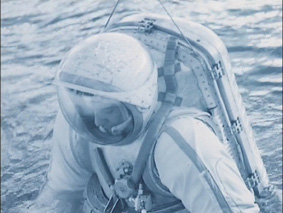
Artavazd Pelechian
Notre siècle
Documentary | 35mm | color | 30:0 | Russia | 1982
Catalogue : 2010Nous | Documentary | 35mm | black and white | 30:0 | Russia | 1969
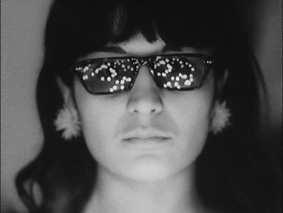
Artavazd Pelechian
Nous
Documentary | 35mm | black and white | 30:0 | Russia | 1969
Artavazd Pelechian
Catalogue : 2009Fin | Experimental doc. | 35mm | black and white | 8:0 | Armenia | 1992
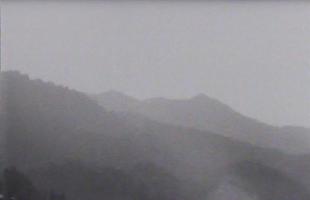
Artavazd Pelechian
Fin
Experimental doc. | 35mm | black and white | 8:0 | Armenia | 1992
Pelechian films with the camera over his shoulder men and women of different ages and ethnic groups on the train from Moscow to Erevan.
Artavazd Pelechian?s cinema ? who, Jean-Luc Godard assures us, is the greatest filmmaker in the world - remains still today not very known in the West. The film maker of Armenian origins got his formation with the VGIK between 1963 and 1968. He lives and works in Moscow, city that he very seldom leaves. His work, which is built film upon film, for the sake of research and experimentation implies what we have discovered, tired levels in movement of evolution. Pelechian films little and only short films. The density of any new opus is in fact every time a rare piece of work.
Catalogue : 2009Les saisons | Experimental doc. | 35mm | black and white | 30:0 | Armenia | 1972
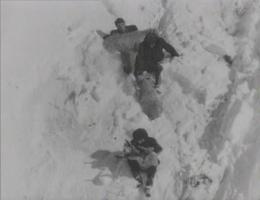
Artavazd Pelechian
Les saisons
Experimental doc. | 35mm | black and white | 30:0 | Armenia | 1972
?The seasons? is a very beautiful poem evoking in a vast parable certain moments in Armenian history, from its volcanic origins, up to the industrial period.
Artavazd Pelechian?s cinema ? who, Jean-Luc Godard assures us, is the greatest filmmaker in the world - remains still today not very known in the West. The film maker of Armenian origins got his formation with the VGIK between 1963 and 1968. He lives and works in Moscow, city that he very seldom leaves. His work, which is built film upon film, for the sake of research and experimentation implies what we have discovered, tired levels in movement of evolution. Pelechian films little and only short films. The density of any new opus is in fact every time a rare piece of work.
Catalogue : 2009Les habitants | Experimental doc. | 35mm | black and white | 10:0 | Armenia | 1970
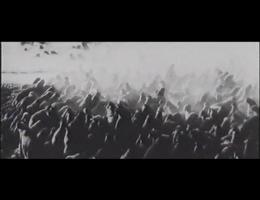
Artavazd Pelechian
Les habitants
Experimental doc. | 35mm | black and white | 10:0 | Armenia | 1970
The film is built on the idea of `` a relationship full of mankind with nature and animals. It deals with the attacks perpetrated by man against nature, and the threat of the destruction of the natural harmony.
`Artavazd Pelechian?s cinema ? who, Jean-Luc Godard assures us, is the greatest filmmaker in the world - remains still today not very known in the West. The film maker of Armenian origins got his formation with the VGIK between 1963 and 1968. He lives and works in Moscow, city that he very seldom leaves. His work, which is built film upon film, for the sake of research and experimentation implies what we have discovered, tired levels in movement of evolution. Pelechian films little and only short films. The density of any new opus is in fact every time a rare piece of work.
Catalogue : 2009Vie | Experimental doc. | 35mm | color | 6:30 | Armenia | 1993
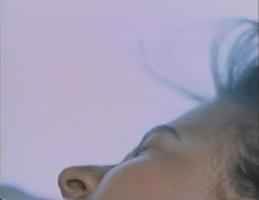
Artavazd Pelechian
Vie
Experimental doc. | 35mm | color | 6:30 | Armenia | 1993
The profile of a woman, lying disfigured - as in pleasure ? in an ancestral gesture. The holding of the child which has just been born, magnified by an ideal, a contrast and abstraction of space which surrounds them, evokes a religious iconography just like the portrait of the mother and child.
`Artavazd Pelechian?s cinema ? who, Jean-Luc Godard assures us, is the greatest filmmaker in the world - remains still today not very known in the West. The film maker of Armenian origins got his formation with the VGIK between 1963 and 1968. He lives and works in Moscow, city that he very seldom leaves. His work, which is built film upon film, for the sake of research and experimentation implies what we have discovered, tired levels in movement of evolution. Pelechian films little and only short films. The density of any new opus is in fact every time a rare piece of work.
Sini Pelkki
Catalogue : 2020Sheet N°4 | Experimental film | 16mm | color | 12:0 | Finland | 2018
Sini Pelkki
Sheet N°4
Experimental film | 16mm | color | 12:0 | Finland | 2018
Sheet No4 examines the outlines and borders of a photograph -and a human being. How to look, how to see, how to move. Using repetition and reinterpretation to both construct and deconstruct the image and its boundaries. A Conflict between outlines and content. One of the starting points of the work was the dialogue between Pelkki and the four multidisciplinary artists, whom she invited to collaborate; Emma Hammarén, Magnús Logi Kristinsson, Johan Jonason and Keiko Yamamoto. The interaction and diverse interpretations embodied in those exchanges becomes the core of Sheet No4. The name of the work refers to a contact sheet, a proposal for a photograph, where all the options are there with possible re-framing and remarks.
Sini Pelkki (b. 1978 Helsinki) works with photography and moving image. She is interested in the subjectivity of seeing, introspective lives of spaces within spaces. In her works landscapes, figures and objects turn into layered narratives that lead to various paths and ambiguous readings. Recent years her work has been going towards different kind of collaborations. Her first work in book form Arranged Lines was released in 2018. Sini Pelkki (b. 1978 Helsinki) works with photography and moving image. She is interested in the subjectivity of seeing, introspective lives of spaces within spaces. In her works landscapes, figures and objects turn into layered narratives that lead to various paths and ambiguous readings. Recent years her work has been going towards different kind of collaborations. Her first work in book form Arranged Lines was released in 2018. Pelkki gained her Bachelor degree in Fine Art from Chelsea College of Art and Design, London (UK) in 2002 and MA from the Academy of Fine Arts Helsinki in 2008. Her works have been shown in exhibitions and film festivals internationally.
Catalogue : 2014Embarkation | Experimental film | 16mm | color | 7:10 | Finland | 2012
Sini Pelkki
Embarkation
Experimental film | 16mm | color | 7:10 | Finland | 2012
Embarkation is a moving image that is framed like a photograph. Through repetition it builds up into a single image, like a photograph that consists of countless images. With simultaneous presence and absence, the work explores the realtionship between still and moving image.
Sini Pelkki is an artist working with photography and moving image. Her work derives and evolves around photography and the photographic image. Her film works are often based on photographic images. Focusing on the subjectivity of seeing and the relation between a human and different physical and psychological environments and spaces. Her work has been shown across Europe in exhibitions and festivals. Pelkki was born 1978 in Helsinki, Finland. She studied fine art in Chelsea College of Art and Design in London (UK) and at the Academy of Fine Arts in Helsinki. She is currently based in Helsinki.
Caroline Pellet
Catalogue : 2014Oblique | Experimental doc. | hdv | color | 13:24 | France | 2010
Caroline Pellet
Oblique
Experimental doc. | hdv | color | 13:24 | France | 2010
OBLIQUE (Texte de Gabrielle Reiner) Oblique est un documentaire expérimental sur un groupe d'astronomes. L'artiste filme ces chercheurs d'étoiles et entrecoupe ces plans avec ceux des «objets » (le nom donné aux étoiles par les astronomes) observés au travers de l'oculaire. La prise de vue adopte les caractéristiques de la caméra de surveillance(1) et une voix-off évoque les techniques utilisées pour améliorer la vision scotopique (2). Les astronomes se documentent avec des photographies d'astres génériques ce qui leur permet à l'observation de mieux discerner les détails des astres. On peut parler d'« expérience améliorée ». Le spectateur est invité à une « expérience esthétique » (Cf. Jauss) paradoxale qui oscille entre deux points de vue: l?exploration optique des observants répond à celle sensible et relative de l'?uvre artistique. En confrontant théories scientifiques et théories esthétiques de la perception, la vidéaste interroge de manière critique la normativité de l'expérience perceptive. 1. Le night shot est le procédé qui permet de filmer la lumière infra-rouge, invisible à l'?il nu. Fait à l ́origine pour les caméras de surveillance, il a été transposé sur les caméras amateurs. 2. Il faut en effet entre vingt et quarante cinq minutes à l'?il pour basculer en scotopique, perception qui sollicite des cellules appelées bâtonnets situées non pas au centre de l'?il mais en périphérie. A cause de cette répartition des cellules ayant la plus grande sensibilité, les astronomes utilisent un regard « oblique » ou décalé, c'est à dire qu'ils visent à coté de l'objet qu'ils veulent voir afin d'obtenir une perception plus détaillée.
BIOGRAPHIE Vit et travaille à Saint-Ouen (France) née en 02/02/1984 en France
Gael Peltier
Catalogue : 2026Percussion mécanique | Performance | mov | color | 2:2 | France | 2018
Gael Peltier
Percussion mécanique
Performance | mov | color | 2:2 | France | 2018
For Gaël Peltier, video is above all a means of recording a performance that cannot be repeated. It is an art of the instant which, as here, culminates in violent mechanical destruction. Its proximity to cinema lies in the procedures behind the actions he undertakes, willingly putting himself in danger and, like a stuntman, accepting the constraints and risks of an operation prepared with meticulous care. Beyond this technical kinship and the references that inevitably come to mind — Crash by David Cronenberg, after J. G. Ballard’s novel, for instance — everything in this work stands in opposition to cinema. There is no narrative: the focus rests on an accident, on the acceleration that leads to it, and on the brutal impact to which the performer submits himself. He places himself entirely within reality; only the driver’s protective gear and harness distinguish this deliberate crash from a fortuitous event of the kind that so often occurs on the road. This resemblance unsettles the viewer’s eye and reveals the presence of a latent desire — not only to watch, but to take part in something that is usually perceived solely as a dramatic event, frequently with fatal consequences.
Gaël Peltier develops a practice in which attitude takes precedence over the production of objects, ready-mades or films, placing his work in the lineage of artists without oeuvre. He describes himself as an “infra-conceptual artist by default,” adopting a lateral position in which a protocol applied to reality becomes the material itself. His projects involve precise forms of commitment: gaining 30 kg in New York for a role that did not exist (La Conjuration, 2010), a car crash staged as critical action (Percussion Mécanique, 2018), or interventions that subtly disturb an otherwise ordinary situation. Video records these processes not in order to produce an effect, but to render visible the conditions of their emergence within real-world circumstances. His work has been exhibited in France and abroad since 2002.
Anu Pennanen
Catalogue : 2006Untitled | Art vidéo | 0 | color | 15:0 | Finland | 2005
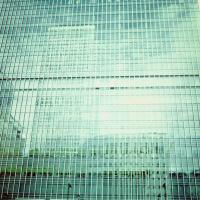
Anu Pennanen
Untitled
Art vidéo | 0 | color | 15:0 | Finland | 2005
Anu Pennanen, Laura HORELLI
Catalogue : 2011Viesti | Documentary | dv | color | 14:3 | Finland | 2009
Anu Pennanen, Laura HORELLI
Viesti
Documentary | dv | color | 14:3 | Finland | 2009
"Relay" is based on a performance where the makers invited eight participants ? individuals and not-for-profit organisations ? to highlight a cause by running a lap of honour at a sports stadium in Finland. The participants were paired. Whilst one of them ran, the other one discussed the topics central to the running group. "Relay" shows the two actions simultaneously in split screen and references the conventions of sports coverage. The name refers both to the sharing of information and to the sport event that acted as the framework.
Anu Pennanen: Anu Pennanen was born in 1975 in Kirkkonummi, Finland, to the family of a social worker mother and technician father. She is based in Helsinki and works internationally. She is an artist working with urban public space and its relation to cinema and media. She works collaboratively and site-specifically with people, who in her works are the mirrors and investigators of built environment. She frequently collaborates with experimental musicians. After graduating from the Academy of Fine Arts in Helsinki 2003 she has exhibited widely internationally; including 2nd Moscow Biennale. Monuments of our Discontent: Expiration of Place. Special project curated by Lolita Yablonskene. Moscow, Russia (2007), Ars Baltica Triennale. Don`t Worry - Be Curious! Stadtgalerie Kiel, Germany; KUMU, Estonian Art Museum, Tallinn, Estonia; Pori Art Museum, Finland (2007), Liverpool Biennial, UK (2006), Scape Biennial of Art in Public Space, Christchurch, New Zealand (2006), Busan Biennale, South Korea (2006), Under your skin, White Box Gallery, New York USA (2005), Manifesta 5, San Sebastian, Spain (2004), Momentum, Moss, Norway (2004). Laura Horelli: Born 1976 in Helsinki. Lives and works in Berlin. Art studies: 1997-2002 Staatliche Hochschule für Bildende Künste - Städelschule, Klasse Bayrle, Frankfurt, Germany. 1995-2001 Academy of Fine Arts Helsinki, Department of Time and Space, MFA.
Miranda Pennell
Catalogue : 2007You made me love you | Experimental video | dv | color | 3:36 | United Kingdom | 2005
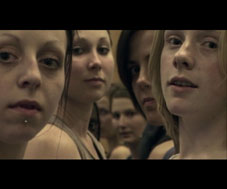
Miranda Pennell
You made me love you
Experimental video | dv | color | 3:36 | United Kingdom | 2005
In the works of Miranda Pennell, minor everyday activities are transformed into fascinating choreographies. In fact, she was not trained as a filmmaker or audiovisual artist, but rather as a dancer. She usually points her camera at 'ordinary' people in their own habitat and in this way analyses the various facets and meanings of movement. In "You Made Me Love You", the rules of the game are simple; a camera moves unexpectedly, quickly or slowly, backwards and forwards along a rail. A troupe of ballet dancers strives to make or keep eye contact with the camera. Only a few faces are continually on screen. Sometimes other dancers manage to steal the limelight for a moment. The rapid footwork, which sometimes can hardly keep up with the camera, is the only audible sound. A true struggle for attention is taking place on the dance floor. Because woe betide you if you end up off screen and sink into oblivion! With "You Made Me Love You", this artist presents us with an allegory of the present-day fixation on cameras and stardom.
Miranda Pennell
Catalogue : 2022Strange Object | Experimental doc. | 0 | color and b&w | 15:20 | United Kingdom | 2020
Miranda Pennell
Strange Object
Experimental doc. | 0 | color and b&w | 15:20 | United Kingdom | 2020
The ‘Z’ Unit’s operation in a world far from our own was an experiment of sorts, a test. And this place, inhabited by beings different from ourselves, served as a laboratory. A successful outcome would secure the Z Unit’s future, enabling its enterprise to expand and its methods to be applied to other worlds. An investigation into imperial image-making, and destruction.
Miranda Pennell is an artist filmmaker based in London. Her recent and current work uses photographic archives as the starting point for a reflection on colonial legacies. She originally trained in contemporary dance, and her award-winning videos exploring choreography in everyday life have been widely screened and broadcast internationally. Pennell received an MA in visual anthropology in 2010 from Goldsmiths College, University of London, and undertook practice-led PhD research completed in 2016. Selected screenings and exhibitions include Intersectional Georgraphies (2022) Martin Parr Foundation, Bristol; Lahore Biennale (2020),Tanzbilder at the Neues Museum Nuremberg (2019), one-person programme at the Stuttgart FilmWinter Festival for Expanded Media (2019), Miranda Pennell: choreographies and archives at the Film Museum Munich (2017), Choreocinema: Siobhan Davies & Miranda Pennell, Barbican, London (2017), Co-op Dialogues 1976-2016: Lis Rhodes & Miranda Pennell, Tate Britain (2016), All Systems Go, Cooper Gallery, Dundee (2016), Europe – The Future of History at Kunsthaus Zurich (2015), and The World Turned Upside Down, Mead Gallery (2013).
Miranda Pennell
Catalogue : 2017The Host | Experimental doc. | hdv | color and b&w | 60:0 | United Kingdom | 2015
Miranda Pennell
The Host
Experimental doc. | hdv | color and b&w | 60:0 | United Kingdom | 2015
A filmmaker turns forensic detective as she pieces together hundreds of photographs in search of what she believes to be a buried history, only to find herself inside the story she is researching. The Host investigates the activities of British Petroleum (BP) in Iran; a tale of power, imperial hubris and catastrophe. While the tectonic plates of geopolitical conspiracy shift in the background, the film asks us to look, and look again, at images produced by the oil company and personal photos taken by its British staff in Iran– including the filmmaker’s parents– not for what they show, but for what they betray. The Host is about the stories we tell about ourselves and others, the facts and fictions we live by - and their consequences.
Miranda Pennell originally trained in contemporary dance and later studied visual anthropology.Her short film and video works that explore performance and choreographies of the everyday, have been screened internationally including for broadcast. Her most recent moving-image work reworks colonial archives as the starting point for investigations into the colonial imaginary. Her film Why Colonel Bunny Was Killed (2010) was awarded best international film at the Images Festival, Toronto, and Courtisane Festival of Media Art, Ghent and is published on DVD by Filmarmalade. The Host (2015) is Pennell’s first feature length film. Selected screenings and exhibition of Pennell’s work includes mixed programs and group shows at Tate Britain (2014), Whitechapel Gallery (2015), Museum of Modern Art Vienna (2012), Kunsthaus Zurich (2015).
Catalogue : 2012Why Colonel Bunny Was Killed | Experimental doc. | hdcam | black and white | 27:30 | United Kingdom | 2010
Miranda Pennell
Why Colonel Bunny Was Killed
Experimental doc. | hdcam | black and white | 27:30 | United Kingdom | 2010
Triggered by the memoirs of a medical missionary on the Afghan borderlands, the film is constructed from some remarkable still photographs of colonial life on the North West frontier of British India at the turn of the 20th century. Searching for clues to the realities behind images framed during a time of colonial conflict, the film plays sound against image and finds striking continuities in Western portrayals of a distant place and people.
Miranda Pennell originally trained in contemporary dance and later studied visual anthropology at Goldsmiths University, London. Her recent and current film work explores social performances framed within photographic archives. Much of Pennell`s work before this explored performance in the `real` world through film and video, and centred on a diverse range of human subjects that have included teenage ice-skaters, amateur and professional dancers, fight directors, soldiers and a marching band, and aspiring drummers.
Catalogue : 2009Drum Room | Experimental doc. | | color | 15:5 | United Kingdom | 2007
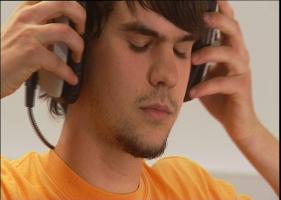
Miranda Pennell
Drum Room
Experimental doc. | | color | 15:5 | United Kingdom | 2007
The empty spaces of an ambiguous building open-up to reveal a group of aspiring musicians as they play together, alone.
Miranda Pennell studied contemporary dance before she started working with film and video. Her work has been shown in different contexts including broadcast, independent cinema, and gallery settings. Recent one-person exhibitions include `I AM/WE ARE` Centre pour Image Contemporain St Gervais Genéve (2008), `PLAY` Void Gallery, Derry (2007), a retrospective program at Cinema Nova Bruxelles (2008), and at the Festival International du Film de La Rochelle (France, 2007). She lives in London.
Miranda Pennell
Catalogue : 2007You Made Me Love You | Experimental video | dv | color | 3:0 | United Kingdom | 2005
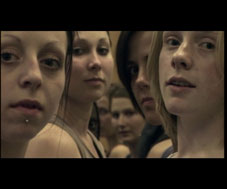
Miranda Pennell
You Made Me Love You
Experimental video | dv | color | 3:0 | United Kingdom | 2005
In the works of Miranda Pennell, minor everyday activities are transformed into fascinating choreographies. In fact, she was not trained as a film maker or audiovisual artist, but rather as a dancer. She usually points her camera at ?ordinary? people in their own habitat and in this way analyses the various facets and meanings of movement. In You Made Me Love You, the rules of the game are simple; a camera moves unexpectedly, quickly or slowly, backwards and forwards along a rail. A troupe of ballet dancers strives to make or keep eye contact with the camera. Only a few faces are continually on screen. Sometimes other dancers manage to steal the limelight for a moment. The rapid footwork, which sometimes can hardly keep up with the camera, is the only audible sound. A true struggle for attention is taking place on the dance floor. Because woe betide you if you end up off screen and sink into oblivion! With You Made Me Love You, this artist presents us with an allegory on the present-day fixation on cameras and stardom.
Edgar Pera
Catalogue : 2007Impending Doom | Experimental film | super8 | color | 7:30 | Portugal | 2006
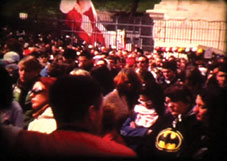
Edgar Pera
Impending Doom
Experimental film | super8 | color | 7:30 | Portugal | 2006
"Impending Doom" was shot in super8 film and is a visual testimony and sonic interpretation of two ceremonies of communion that took place in Rome and in Lisbon in the year 2005 AD. Both communities with different kinds of beliefs and ideologies shared a sense of pain, grief, and peace in a world at war.
Edgar Pêra was born on November 19, 1960, in Lisbon, Portugal.
Vladimir Perales
Catalogue : 2007La Fiambrera Obrera | 0 | 0 | | 0:0 | Spain | 2007
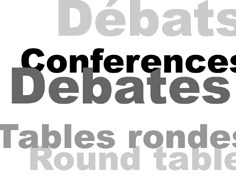
Vladimir Perales
La Fiambrera Obrera
0 | 0 | | 0:0 | Spain | 2007
Fiambrera is an open group that has been working and intervening in arenas with a high degree of political conflicts, such as the borders between rich and poor countries, or in (not so) different places like the inner cities of Madrid, Barcelona, or Seville. Their methods are basically those of intervention and direct action articulated with other, more conventional, social and political agents, providing graphics, communication devices, and direct action tools and equipments. They have been invited as visiting artists by institutions such as the MIT, Calarts, Yale University, NYU, etc, and most recently in Transmediale and Ars Electronica. Some years ago they curated "The Agencies", working from Barcelona with the support of the Contemporary Art Museum of Barcelona (MACBA), and trying to offer social movements and networks resources to produce campaigns, counter-information resorts, actions, and interventions. Over they years they have collaborated with other groups such as The Yes Men, Rtmark, and "Kein Mensch ist Illegal". They were involved in the edition of two books related to public and political art practices: "Manual de la Guerrilla de la Comunicación" (Editorial Virus, Barcelona, 2000), and "Modos de hacer: Arte político, esfera pública y acción directa" (Ediciones Universidad de Salamanca, Salamanca, 2001). The autonomy research being one of their basic tenets, they have recently been organizing a series of events and producing a number of videos under the identity "PornoLab" where their energies converge towards the exploration of intimacy and sexual desire as tools for political analysis and action.
Vladimir Perales lives and works in Madrid.
Galería Perdida
Catalogue : 2016The blind don't see black, they see nothing | Experimental film | 16mm | black and white | 5:41 | Mexico, USA | 2015
Galería Perdida
The blind don't see black, they see nothing
Experimental film | 16mm | black and white | 5:41 | Mexico, USA | 2015
This film marks an investigation into the halftone print. Specifically, the spherical and diamond pattern that makes up an image found commonly in offset printing. These tessellations form a corollary to the structure of language where each "dot" is akin to a phoneme. In linguistics, the collated phonemes make up a morpheme—what we can call a meaningful word. The dot in the halftone print functions much the same way. With these dots, the reach of an image is made possible, exploded and distributed for the masses. Its legibility is a consumable currency by being illustrative for accompanying texts. When enlarged, the text loosens its hinges on the atomized image. The dots establish a dominant vocabulary contingent only on one another. For The Blind Don`t see Black, They See Nothing, the poetics lie within the parts of a whole, hidden amidst a constituted body.
The artist collective Galería Perdida are known for their multidisciplinary practice that brings together an inquiry of traditional crafts and the absurd, typographical design with semantic operatives. Fundamental to their research are encounters with idiosyncratic found texts and humor, design principles and the moving image; these irrational sources form the basis of a sculptural vocabulary. The use of humor is just one of many interests that Galería Perdida pursue in their body of work. Textiles, dead languages, redundancy, negation, display and the gallery, glyphs, organic matter, and graphic design are among the multiple reference points. Their constellation of objects and situations formulate a place for these subjects to collide, interact, and push against one another while defining the decree that the production of an object is not a singular but collective act.
Carlos Pereira
Catalogue : 2026Unruhe | Experimental film | 16mm | color | 11:50 | Portugal, Germany | 2024
Carlos Pereira
Unruhe
Experimental film | 16mm | color | 11:50 | Portugal, Germany | 2024
"There’s been a strange epidemic lately Going amongst the folk, So that many in their madness Began dancing. Which they kept up day and night, Without interruption, Until they fell unconscious. Many have died of it."
Carlos Pereira, born in Lisbon, is studying Film Directing at the Deutsche Film- und Fernsehakademie Berlin (DFFB). His films have been screened at festivals such as Locarno, San Sebastián and Rencontres Internationales Paris/Berlin. His film Slimane (2023) won the German Film Critics Award for Best Short Film. His first feature film, Remote Islands, written during a residency at The Bergman Estate on Fårö, is currently in pre-production.
Catalogue : 2022Vulkan | Experimental fiction | mov | color | 6:2 | Portugal, Germany | 2021
Carlos Pereira
Vulkan
Experimental fiction | mov | color | 6:2 | Portugal, Germany | 2021
Berlin, 2020. On that cloudy summer day by the lake, while observing something terrible, their bodies blocked with fear.
Carlos Pereira (1989, Lisbon) is a filmmaker and programmer. He is currently studying Film Directing at the Deutsche Film- und Fernsehakademie Berlin (dffb), having previously studied film in Lisbon, Barcelona and Stockholm. His films have been shown at festivals such as Rencontres Internationales Paris/Berlin, IndieLisboa, Doclisboa and Vila do Conde, and screened at venues such as Cité Internationale des Arts, Haus der Kulturen der Welt and Museum of Modern Art of Rio de Janeiro. He worked as a member of the selection committee for Sheffield DocFest and is a member of the advisory selection committee for Berlinale Generation.
Catalogue : 2018Histórias de Fantasmas (Ghost Stories) | Experimental doc. | hdv | color | 13:32 | Portugal, Germany | 2017
Carlos Pereira
Histórias de Fantasmas (Ghost Stories)
Experimental doc. | hdv | color | 13:32 | Portugal, Germany | 2017
I. A storm in Berlin. Lightnings. The sound of thunders. II. Searching for a face in the dark. III. Inside an old Stasi building, a painter of ruins talks about being human.
Carlos Pereira (Lisbon, 1989) studied film directing in Lisbon (Escola Superior de Teatro e Cinema) and Barcelona (Escuela de Cine Bande à Part) and film studies in Stockholm (Stockholms Universitet). His films have been screened in festivals such as IndieLisboa, DocLisboa, Vila do Conde and Córtex and venues such as The Portuguese Cinematheque. Lives and works in Berlin, where he is as a member of the selection committee for Generation (Berlinale).
Jonathan Perel
Catalogue : 20185-T-2 Ushuaia | Experimental doc. | 4k | color | 4:0 | Argentina | 2016
Jonathan Perel
5-T-2 Ushuaia
Experimental doc. | 4k | color | 4:0 | Argentina | 2016
Adolfo Scilingo was the only military officer to confess the dictatorship crimes. Among the details he gave of the way the genocide worked, throwing prisoners from planes into the water to their death, Scilingo specifies the model that was used in the flights he participated in: an Electra. Of the eight Electras that belonged to the Argentine Navy, five of them were bought in 1982. Only the three bought in 1973 could have been used in the flight that Scilingo describes. Those three Electras are at present in Argentina. This film of Jonathan Perel searches cartographically the traces of those planes.
Jonathan Perel, born in 1976, lives and works in Buenos Aires. He attended a degree in Arts at the Faculty of Philosophy and Letters (University of Buenos Aires). He directed the feature films Toponimia (2015), Tabula Rasa (2013), 17 Monumentos (2012) and El Predio (2010), and the short films Las Aguas del Olvido (2013), Los Murales (2011) and 5 (cinco) (2008). Two times awarded with the Metropolitan Fund for the Arts, his films have been screened and awarded in numerous international film festivals, such as: Viennale, IFFR Rotterdam, FIDMarseille (Prix Camira), BAFICI, YIDFF Yamagata, Rencontres Internationales Paris/Madrid/Berlin (Palais de Tokio & Haus der Kulturen der Welt), First Look (Museum of the Moving Image), Porto/Post/Doc, Underdox, La Havana.
Catalogue : 2014LAS AGUAS DEL OLVIDO | Experimental doc. | hdcam | color | 9:0 | Argentina | 2013
Jonathan Perel
LAS AGUAS DEL OLVIDO
Experimental doc. | hdcam | color | 9:0 | Argentina | 2013
The poems to death are a deception. Death is death. The river was filled. Ghostly extensions. A grave in the air was dug, in the course of the wide river, where there is no stricture. All sank into the deepest shadows. A river as grave. What is the color of this water? How to swim or sail in the darkness of our history? Hairs are still crossing the waters, remain under a poisonous sky. The skin, river sand. In a glass are collected every day, bodies. We drink water of forgetfulness. There is fog.
Born in 1976, lives and works in Buenos Aires. In 2013 he premieres Tabula Rasa, his third feature film at BAFICI 15° Panorama Selection, and his last short documentary Oblivion Waters at the Official Competition of FIDBA. In 2012 he premieres his second documentary feature 17 monuments at BAFICI?s Official Selection. In 2011 he premieres his documentary short Los Murales at BAFICI 13°. In 2010 he premiered El Predio, his first feature film, at the Cinema of the Future Competition of BAFICI 12°. He also directed the short documentaries 5 (five) (2008, Official Competition BAFICI 10°) and The Murals (2011, BAFICI 13°). Two times awarded with the Metropolitan Fund for the Arts in Buenos Aires. His films have been screened in numerous international film festivals, such as: FIDMarseille (France); Rencontres Internationales Paris/Madrid/Berlin at Palais de Tokio & at Haus der Kulturen der Welt; Festival Internacional del Nuevo Cine Lationamericano, La Havana (Cuba); Semana de Cine Experimental de Madrid (Spain); Cine//B (Chile); Festival Cinematográfico Internacional del Uruguay; Óptica, Gijón Festival Internacional de Video Arte (Spain); FIACID Festival Iberoamericano de Cine Digital (Perú); La Sudestada, Quinzaine de culture et Cinéma Argentin à Paris (France).
Miguel Peres Dos Santos
Catalogue : 2016Voices | Experimental film | hdv | color and b&w | 18:48 | Portugal, Netherlands | 2015
Miguel Peres Dos Santos
Voices
Experimental film | hdv | color and b&w | 18:48 | Portugal, Netherlands | 2015
That one is able to speak does not mean that one has a voice. In Voices, Miguel Peres do Santos constructs a comparison between the collective consciousness and a censored archive. Just like in our own lives, we “choose” to keep what we do not want to remember as far from our consciousness as we unconsciously can; the same method we apply on public archival material that we would rather not be confronted with as a societal whole. At the television archive of Beeld and Geluid, Miguel Peres dos Santos and Sharelly Emanuelson found a significant amount of footage relating to migration from the public television memory of the Netherlands. In it, the essence of the Dutch relation to the alleged “other” can be viewed. In Voices Peres dos Santos uses this material to try to find out if the perceived voiceless were really silent, and if those who do not have a voice today are only mute to the ones who refuse to listen.
Miguel Peres dos Santos (Lisboa, 1976) is an independent artistic researcher graduated in his MA in 2012 from the Royal University of the Arts in The Hague, The Netherlands. His work is frequently screened in The Netherlands, but also in Belgium, France, Denmark, Norway, Portugal and the U.S. He lectured in 2012 for the University College Leiden, and is a policy advisor for Foundation Focus. He currently lives and works in The Hague.
Dan Perez, Benjamin Klintoe
Catalogue : 2015Cantine | Experimental fiction | hdv | color | 32:16 | France | 2013
Dan Perez, Benjamin Klintoe
Cantine
Experimental fiction | hdv | color | 32:16 | France | 2013
Ismaël est venu en France dans l'espoir de trouver le pardon. Ex-prisonnier, il a quitté les Etats-Unis pour Paris, où il pense trouver calme et paix. Il atterrit finalement dans une zone sinistrée de la banlieue parisienne. Il déambule à la bordure du périphérique et, parfois, il tente d’oublier ses démons dans un sommeil trouble et agité. Des souvenirs de son enfance viennent le hanter alors que la vie en France semble être de plus en plus difficile, entre contrition et abandon.
Dan Perez et Benjamin Klintoe sortent tout juste de la prestigieuse Ecole Nationale Supérieure des Arts Décoratifs de Paris. Ils pratiquent la vidéo ou la photographie dans une pratique régulière et personnelle.
Jeffrey Perkins
Jenny Perlin
Catalogue : 2006Possible Models | Animation | 16mm | | 10:45 | USA | 2004
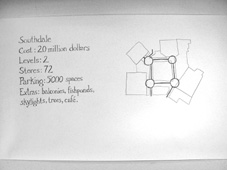
Jenny Perlin
Possible Models
Animation | 16mm | | 10:45 | USA | 2004
?The 16 mm stop motion animation, Possible Models (2004), looks at capitalism?s attempt to purchase paradise through three ?case studies?: the Mall of America?s failure to live up to its potential as a utopian complex; the Mall of Dubai as the new global super-mall; and the ?freedom ship?, a floating self sustained mall-based community/commune that encircles continents.? --Jeffrey Uslip, The Project, New York, NY, July, 2004
Jenny Perlin`s 16mm films, videos, and drawings work with and against the documentary tradition, incorporating innovative stylistic techniques to emphasize issues of truth, misunderstanding, and personal history. Perlin?s films and videos have won awards at numerous festivals, and have been exhibited in galleries and museums both in the US and abroad. Perlin is currently represented by Annet Gelink Gallery, Amsterdam, Netherlands. An artist?s book will be released in 2006, by D.Marzona, Berlin, as well as several catalogues from recent exhibitions.
Jean-baptiste Perret
Catalogue : 2026Le quotidien | Video | hdv | color | 5:11 | France | 2025
Jean-baptiste Perret
Le quotidien
Video | hdv | color | 5:11 | France | 2025
Filmed in the gorges of the Haut-Allier, Le quotidien is the portrait of a man who has chosen to live alone and apart, in a cabin at the edge of a forest. The images record his everyday gestures, tied to the essential needs of human existence: drinking, eating, washing, mending, beginning again. “Like an anthropologist-filmmaker, Jean-Baptiste Perret chooses a site — often rural — and immerses himself in it for long periods. He builds relationships with the people he meets there, filming their living spaces and their knowledge. Shot in the gorges of the Haut-Allier, Le quotidien portrays a man who has chosen to live alone, removed from human society, in a cabin at the forest’s edge. The videomaker captures his daily gestures, linked to the essential needs of human life: drinking, eating, washing, repairing, starting again. The film forms part of a broader enquiry into marginal life paths within rural contexts, in which other relationships to the living world, to territory, and to ecology are invented.” (Work Method, Guillaume Désanges and Coline Davenne)
After studying ecology, Jean-Baptiste Perret worked for several years in environmental protection within local authorities. A 2018 graduate of the École des Beaux-Arts de Lyon, he has continued to pursue his interest in rural contexts through a filmmaking practice that takes the form of films and video installations. His work is driven by the question of care, which he understands as an attentiveness to vulnerability, inseparable from the regenerative capacities of individuals. His approach is grounded in documentary enquiry and draws on methods borrowed from anthropology that challenge conventional criteria of objectivity, placing affect at the very centre of the research process. He is also inspired by microhistory, which seeks to step away from official narratives of the many in order to focus on individuals and their own ways of understanding the world. Jean-Baptiste Perret films people he encounters in their everyday situations, engaging with their life paths, their surroundings, and their skills. Through varying degrees of staging — always leaving room for improvisation — subjective accounts and fictional strategies intermingle. His work has been shown at the Institut d’art contemporain (IAC) in Villeurbanne as part of the 15th Lyon Biennale, at the Musée d’art contemporain de Lyon, at Fondation d’entreprise Ricard (Paris), at the Musée de la Chasse et de la Nature (Paris), at the Chapelle Saint-Jacques (Saint-Gaudens), at the Institut national d’histoire de l’art (Paris), at FID Marseille, at the Festival Hors-Pistes at the Centre Pompidou, at the États généraux du documentaire in Lussas, and more recently at the 66th Salon de Montrouge. Jean-Baptiste Perret is represented by Galerie Salle Principale in Paris.